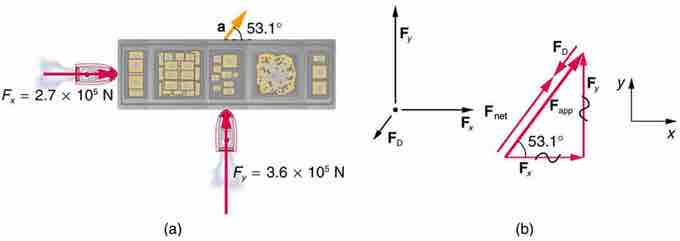We know that a net force affects the motion, position and shape of an object. It is useful at this point to look at some particularly interesting and common forces that will provide further applications of Newton's laws of motion. Specifically, we will discuss the forces of friction, air or liquid drag, and deformation.
Friction
Friction is a force that resists movement between two surfaces sliding against each other. When surfaces in contact move relative to each other, the friction between the two surfaces converts kinetic energy into heat. This property can have a dramatic effect, as seen in the use of friction created by rubbing pieces of wood together to start a fire. Friction is not itself a fundamental force, but arises from fundamental electromagnetic forces between the charged particles constituting the two contacting surfaces.
Drag
Another interesting force in everyday life is the force of drag on an object when it is moving in a fluid (either gas or liquid). You feel this drag force when you move your hand through water, or through the wind. Like friction, the force of drag is a force that resists motion. As we will discuss in later units, the drag force is proportional to the velocity of the object moving through it. We see an illustrated example of drag force in.

Drag Force on a Barge
(a) A view from above of two tugboats pushing on a barge. (b) The free-body diagram for the ship contains only forces acting in the plane of the water. It omits the two vertical forces—the weight of the barge and the buoyant force of the water supporting it cancel and are not shown. Since the applied forces are perpendicular, the
Deformation
We now move from consideration of forces that affect the motion of an object (such as friction and drag) to those that affect an object's shape. If a bulldozer pushes a car into a wall, the car will not move but it will noticeably change shape. The change in shape of an object due to the application of a force is a deformation. Even very small forces are known to cause some deformation. For small deformations, two important characteristics are observed. First, the object returns to its original shape when the force is removed (that is, the deformation is elastic for small deformations). Second, the size of the deformation is proportional to the force.